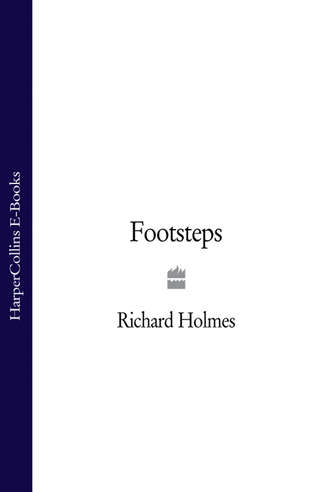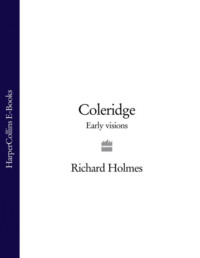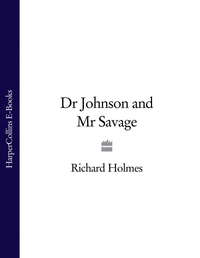
Полная версия
Footsteps
My final lesson from the Cévennes is as much metaphysical as literary. It is the paradox that the more closely and scrupulously you follow someone’s footsteps through the past the more conscious do you become that they never existed wholly in any one place along the recorded path. You cannot freeze them, you cannot pinpoint them, at any particular turn in the road, bend of the river, view from the window. They are always in motion, carrying their past lives over into the future. It is like the sub-atomic particle in nuclear physics that can be defined only in terms of a wave-motion. If I try to fix Stevenson in his green magic dell in the Lozère, or his whitewashed cell at La Trappe, or under his chestnut tree below Mont Mars; if I try to say—this man, thinking and feeling these things, was at this place, at this moment—then at once I have to go backwards and forwards, tracing him at other and corresponding places and times—his childhood bedroom at No 17 Heriot Row, Edinburgh, or his honeymoon ranch at Silverado, California.
So without knowing it, my youthful journey through the Cévennes led me over the hills and far away into the undiscovered land of other men’s and women’s lives. It led me towards biography.
TWO
1968 : Revolutions
1
One sultry evening in the spring of 1968, standing at the window of a small upper room in Paddington, I first heard the sounds of the new French Revolution. I had not been to France for four years, and the idea of biography had lain dormant in my mind. After taking a degree at Cambridge I had come down to London and found a temporary job compiling the political register for Westminster City Council. It brought me to the hundreds of poor flats and bedsits in Victoria and Pimlico, the depressed area of South London by the Thames. I sat discussing paintwork, plumbing and social security benefits in endless sad kitchens, sipping tepid tea or sweet sherry. Powerless to act on the petty injustices and miseries I saw, I learned at least how to listen to other people, and observe some of the forces that shaped their lives. I expressed my anger in poems, written with the clumsy literalness of pop-songs, but could find no real outlet for my deeper feelings.
The five-storey house in which I had my garret was almost entirely let to other young people and students, and in keeping with the times we became a kind of commune, busy with macrobiotic food and anti-Vietnam marches and geodesic domes.
The ground-floor was occupied by the consulting rooms of a lady psychiatrist, specialising in drug-addicts and other youthful breakdowns, many of them gifted drop-outs from universities, unmarried mothers trying to find their feet, or young painters and musicians who’d temporarily blown their minds. I sketched a story-essay, which eventually became an impressionistic study of the poet Thomas Chatterton, a precursor of Romanticism, who came to London at the age of seventeen, took opium and committed suicide by mistaken overdose—or “OD”, as it was succinctly called on the ground-floor. Chatterton lived at the end of the eighteenth century, but I had a strange feeling that I was writing about someone in the same house.
It was a restless time. The window of my attic room overlooked the shunting yards of Paddington station, and my dreams were shaken by the whistle and roar of departing trains. The sense of movement and change was everywhere. News of disturbances in Paris had been reported piecemeal in the English papers for weeks, but largely in terms of isolated disruptions by students at Nanterre, or syndicalistes at Renault. Then I began to get letters from friends already in the city, speaking in confused, rapturous terms of the long “sit-ins”, the great marches and demonstrations, people coming from all over Europe—Berlin, Rome, Amsterdam—to celebrate the new spirit of Liberté, and take part in some huge, undefined événement. It was a carnival, they wrote, and a revolution too. The world would never be the same again, the authorities were cracking, the old order was in retreat.
A letter from Françoise, a girl I’d met after the Cévennes journey, now a student in Paris, reached me; it was carried over by a lorry-driver as the French post had gone on strike:
Across the boulevard a dark-blue Peugeot was lying on its side burning. Its wheels in the air meant the whole city had turned upside down. The pavements glittered with broken glass, and the flames shone on our posters flyleaved up the trees. The night stank of riot gas, and my eyes ran with tears—of happiness! At the bottom of the rue des Ecoles the wall below the barred windows of the Medical Faculty was painted with enormous graffiti in red—Imagination au Pouvoir … The CRS surged by in their black boiler suits and visored helmets, swinging their long batons like madmen who didn’t understand our sanity. I saw a little old lady with a Samaritaine carrier-bag walk straight through them untouched … Everyone in the cafe was cheering and embracing each other, bringing in the latest news. It is like a dream come true!
I read this with mixed feelings, half-excited and half-sceptical. Then, one evening at my window, staring out into the quiet English night and hearing the distant clankings, I tuned my radio to Luxembourg and heard with astonishment that they were trying to burn down the Bourse. It was a live report—French state radio had been forbidden live coverage—and the noises seemed to fill my room. I could hear the huge crowds shouting, the crack of CRS gas-canisters, the brittle, thrilling sound of breaking glass, the sudden ragged bursts of cheering. And suddenly the idea of “the Revolution” came to life in my head, and I knew that it was something I had to write about. It was not the destruction that excited me but the sense of something utterly new coming into being, some fresh, immense possibility of political life, a new community of hope, and above all the strangely inspired note—like a new language—that sounded in the voices of those who were witnessing it. It was a glimpse of “the dream come true”, the golden age, the promised land.
Moreover, I identified it—immediately, naïvely—with that first French Revolution as seen by the English Romantics some hundred and eighty years before. The gap in time, the great and complex historical differences, for a moment meant nothing to me. For what I was feeling, what my friends were feeling, seemed to be expressed perfectly by the Romantics, and by no one else.
’Twas a time when Europe was rejoiced,
France standing at the top of golden hours
And human nature seeming born again.
So William Wordsworth had written, when in July 1790 he set off to walk through France on the first anniversary of the fall of the Bastille.
There were moments when the student barricades round the Sorbonne and in parts of the Latin Quarter really did seem to be re-enacting the events of 1789-94 (though no Robespierre arrived and no Terror began). The huge open debates in the courtyard of the Sorbonne and in Paris theatres like the Odéon seemed to be emulating, if not the great ideological discussions of the first Assemblée Nationale—in many ways the climax of the entire eighteenth-century Enlightenment—at least the more fervid and impassioned meetings of the Cordeliers and the Club des Jacobins. If there was no Robespierre there were many who looked and sounded like the young, handsome, long-haired and insolent Saint-Just.
When on 27 May de Gaulle took mysterious flight from Paris to an unknown destination (actually he went by helicopter to consult with General Massu at an army base in Germany), many people drew the parallel with Louis XVI’s fatal flight to Varennes of autumn 1792. If history was not exactly repeating itself then at the least it was in a strange state of theatrical correspondence. It was a replay, a rerun, a harmonic echo across nearly two centuries.
The whole ethos of the Sixties—that youthful explosion of idealism, colour, music, sex, hallucinogenic states, hyperbolic language and easy money (“the counter-culture”, as the sociologists called it)—was based on a profoundly romantic rejection of conventional society, the old order, the establishment, the classical, the square (and also, in fact, austerity).
Bliss was it in that dawn to be alive,
But to be young was very heaven!
Many of the catchwords and concepts of the Sixties, indeed the very idea of “revolution” itself as a flamboyant act of self-assertion—“the language of personal rights”—found either inspiration or confirmation in the generation of the 1790s. Coleridge and Southey’s plan to found a commune on the banks of the Susquehanna river; Blake’s poetry of visions and defiance (“The Tigers of Wrath are Wiser than the Horses of Instruction”, from The Proverbs of Hell, was one of the most popular graffiti); Shelley’s notions of free love and passive resistance, understood as an early form of Flower Power, “Make Love Not War”; Coleridge’s and later Thomas de Quincey’s interest in drugs and dream-states; Mary Wollstonecraft’s championship of the rights of women—all these spoke directly to the generation of May ′68.
Above all, there was the challenge to the conventions and structures of authority, the whole tone of confrontation, which took place daily, whether in the matter of clothes, art, sexual morality, religious piety or politics. Such confrontation was international: the counter-culture took to the road and passed all frontiers, entered all cities; just as the first Romantics had set out on their wanderings to Wales, France, Germany, Italy, Greece or the Levant—only “the Orient” now meant India rather than Arabia.
What William Hazlitt wrote of the face of the young Southey before he cut his hair and settled down with his extended family in the Lake District, could have been written of many of the young bearded and Christ-like faces on the barricades of ′68. These in turn unconsciously reflected the revolutionary features of the young Cuban, Che Guevara, whose image hung like an icon in a million bedsits, aparts, pads and communal kitchens, in London, New York, Hamburg, Paris and Rome. Hazlitt described this revolutionary and Utopian archetype, as it first made its appearance in the 1790s:
Mr Southey, as we formerly remember to have seen him, had a hectic flush upon his cheek, a roving fire in his eye, a falcon glance, a look at once aspiring and dejected. It was the look that had been impressed upon his face by the events that marked the outset of his life. It was the dawn of Liberty that still tingled his cheek …
While he supposed it possible that a better form of society could be introduced than any other that had hitherto existed, while the light of the French Revolution beamed into his soul—while he had this hope, this faith in man left, he cherished it with a childlike simplicity, he clung to it with the fondness of a lover. He was an enthusiast, a fanatic, a leveller; he stuck at nothing that he thought would banish all pain and misery from the world; in his impatience at the smallest error or injustice, he would have sacrificed himself and the existing generation (a holocaust) to his devotion to the right cause.
Hazlitt was himself one of these young radical enthusiasts, and had visited Paris as an art student during the Peace of Amiens in 1802. In The Spirit of the Age, his portrait of the leading writers and politicians of his generation, written twenty years after, he continued to judge men like Southey, Coleridge, Wordsworth and Godwin by the yardstick of their first revolutionary ideals, and in that dawn light of the French Revolution. It was a light that most of them, he felt, had gone on to deny or betray, and there is a mixed tone of cynicism and elegy—the “hectic flush” and the “falcon glance”—to many of these portraits, which the witnesses and survivors of May ′68 will instantly recognise as part of their own experience. As Hazlitt wrote mockingly of Southey: “He wooed Liberty as a youthful lover, but it was perhaps more as a mistress than a bride; and he has since wedded with an elderly and not very reputable lady, called Legitimacy.”
For the sense of disillusion set in quickly after May ′68. This was also something about which I wanted to write. Contemporary historians now describe it in terms of the Arab oil crisis, the economic depression in Europe, the rise of right-wing governments and the advent of the first mass unemployment since the 1930s. We saw it in more immediate and human terms: communes that went broke, free unions that became bad marriages, university faculties that became hotbeds of rivalry and fruitless dispute, artistic spirits who became addicts and breakdowns, travellers who came home sick and sorry, women who became exhausted, one-parent families, a world of little presses and alternative newspapers that dropped into oblivion, and a Paris where the Bourse remained and Les Halles was destroyed.
How to make sense of all this? And how not to betray the light? As Hazlitt, once more, wrote of William Godwin, the author of Political Justice (1793), the most radical of all the English revolutionary tracts:
Fatal reverse! Is truth then so variable? Is it one thing at twenty and another at forty? Is it at a burning heat in 1793, and below zero in 1814? … Were we fools then, or are we dishonest now? Or was the impulse of the mind less likely to be true and sound when it arose from high thought at warm feeling, than afterwards, when it was warped and debased by the example, the vices, and follies of the world?
I was soon in France again myself. For a moment I saw fragments of the great événements, though already the carnival was in chaos and the millennial hopes in retreat, the visions of those banners against the blue spring sky, those great roaring crowds, those nightly barricades, scattered by violence and confusion and confrontations with intense personal fear.
One night, coming out of the place de la Sorbonne on to the boul’ Mich, my hands full of books and papers, I was caught up in a sudden CRS sweep. It was raining lightly, a sweet-scented summer rain, and the CRS coaches—dark-green, with grilled windows, and rows of doors opening simultaneously, like a train pulling into a rush-hour station—came skidding up on to the pavements, lights flashing and klaxons blaring. A few yards away a girl in blue lycée overalls, painted with Maoist signs, was knocked to the ground and a mass of leaflets spilled out of her canvas shoulder-bag. Hesitatingly, I took a step towards her, and found myself jammed against the iron fence that runs along the site of the old Cluny monastery, where Peter Abelard used to lecture before he met Héloïse. The pressure on my chest was from the barrel of an automatic rifle.
Конец ознакомительного фрагмента.
Текст предоставлен ООО «ЛитРес».
Прочитайте эту книгу целиком, купив полную легальную версию на ЛитРес.
Безопасно оплатить книгу можно банковской картой Visa, MasterCard, Maestro, со счета мобильного телефона, с платежного терминала, в салоне МТС или Связной, через PayPal, WebMoney, Яндекс.Деньги, QIWI Кошелек, бонусными картами или другим удобным Вам способом.










